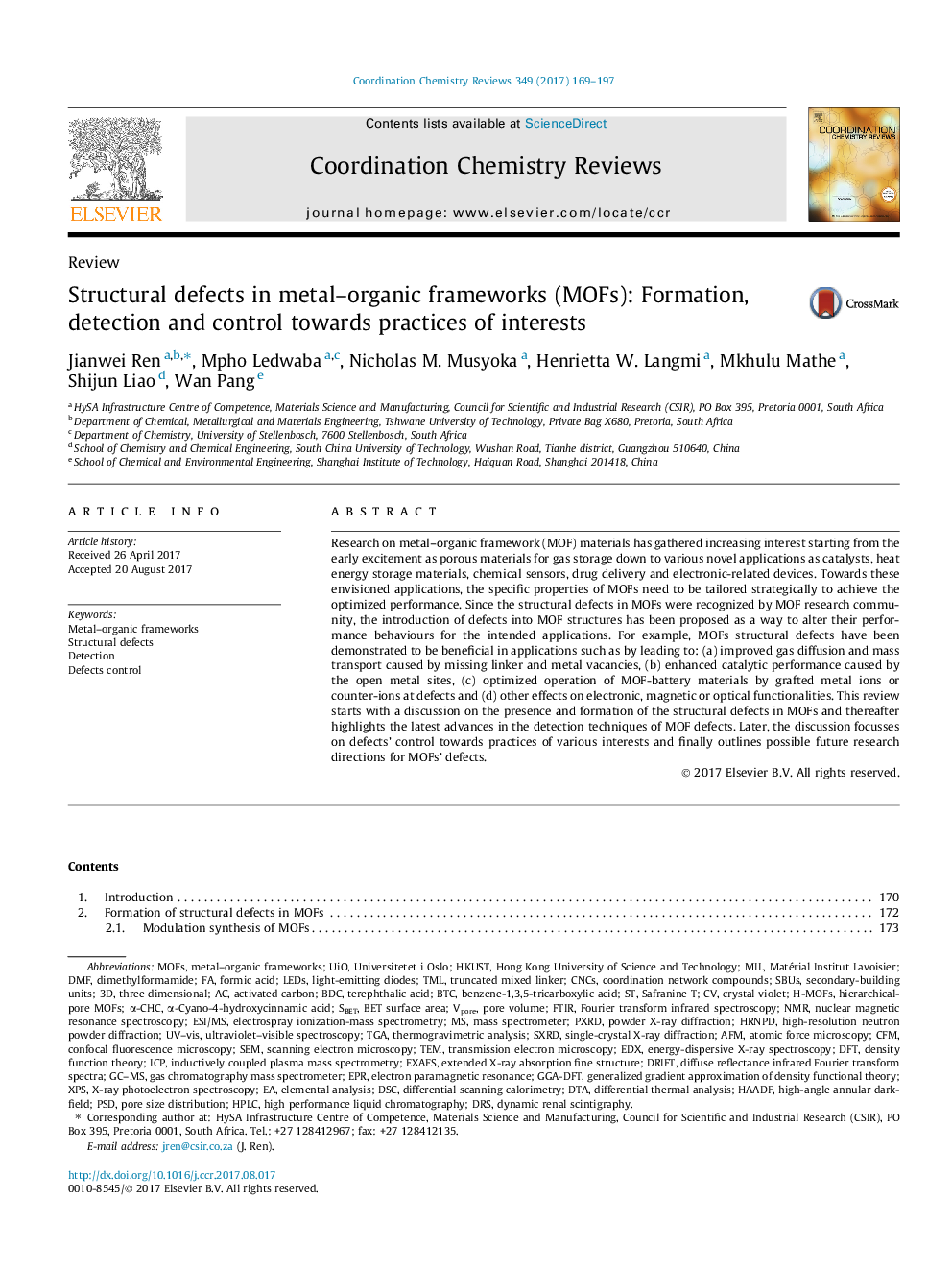| Article ID | Journal | Published Year | Pages | File Type |
|---|---|---|---|---|
| 5150676 | Coordination Chemistry Reviews | 2017 | 29 Pages |
Abstract
Research on metal-organic framework (MOF) materials has gathered increasing interest starting from the early excitement as porous materials for gas storage down to various novel applications as catalysts, heat energy storage materials, chemical sensors, drug delivery and electronic-related devices. Towards these envisioned applications, the specific properties of MOFs need to be tailored strategically to achieve the optimized performance. Since the structural defects in MOFs were recognized by MOF research community, the introduction of defects into MOF structures has been proposed as a way to alter their performance behaviours for the intended applications. For example, MOFs structural defects have been demonstrated to be beneficial in applications such as by leading to: (a) improved gas diffusion and mass transport caused by missing linker and metal vacancies, (b) enhanced catalytic performance caused by the open metal sites, (c) optimized operation of MOF-battery materials by grafted metal ions or counter-ions at defects and (d) other effects on electronic, magnetic or optical functionalities. This review starts with a discussion on the presence and formation of the structural defects in MOFs and thereafter highlights the latest advances in the detection techniques of MOF defects. Later, the discussion focusses on defects' control towards practices of various interests and finally outlines possible future research directions for MOFs' defects.
Keywords
SBETDRSPXRDAFMHAADFTMLBTCEDXCFMTGAMILBDCCNCsICPPSDDSCSXRDUIODMFEXAFSDRIFTDTAMatérial Institut LavoisierHKUSTDFTESI/MSGC–MSLEDsMOFsUV–VisDifferential Thermal Analysisα-cyano-4-hydroxycinnamic acidTerephthalic acidFormic acidEnergy-Dispersive X-ray SpectroscopyTemBenzene-1,3,5-tricarboxylic acidCrystal violetThermogravimetric analysisElemental analysisDetectionNMRElectron paramagnetic resonanceEPRPore size distributionPore volumeUniversitetet i OsloSBUsHong Kong University of Science and TechnologydimethylformamideLight-emitting diodesextended X-ray absorption fine structureSafranine TBET surface areathree dimensionalmass spectrometerFTIRUltraviolet–visible spectroscopyElectrospray ionization-mass spectrometryNuclear magnetic resonance spectroscopyX-ray photoelectron spectroscopyFourier transform infrared spectroscopyXPSinductively coupled plasma mass spectrometrymetal–organic frameworksSEMhigh-angle annular dark-fieldScanning electron microscopyTransmission electron microscopyconfocal fluorescence microscopyatomic force microscopyDensity function theoryStructural defectsPowder X-Ray DiffractionSingle-crystal X-ray diffractionHigh-resolution neutron powder diffractionDifferential scanning calorimetryActivated carbonhigh performance liquid chromatographyHPLC
Related Topics
Physical Sciences and Engineering
Chemistry
Inorganic Chemistry
Authors
Jianwei Ren, Mpho Ledwaba, Nicholas M. Musyoka, Henrietta W. Langmi, Mkhulu Mathe, Shijun Liao, Wan Pang,
